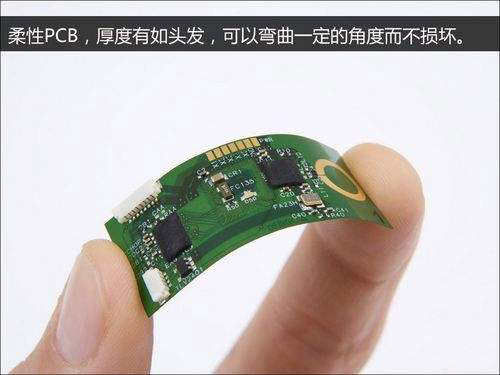Ground wire suppression and interference in PCB design
- 9月 16, 2017
- 11:44 上午
1. FPC electroplating of flexible circuit boards
(1) The pre-treatment of FPC electroplating for flexible printed boards. After the coating process, the exposed copper conductor surface of FPC may be contaminated with adhesive or ink, and there may also be oxidation and discoloration caused by high-temperature processes. To obtain a tight coating with good adhesion, the pollution and oxide layer on the conductor surface must be removed to make the conductor surface clean. But some of these pollutants are firmly bound to copper conductors and cannot be completely removed with weak cleaning agents. Therefore, most of them often use alkaline abrasives and polishing brushes with a certain strength for treatment. The adhesive for the covering layer is mostly epoxy resin and has poor alkali resistance, which can lead to a decrease in bonding strength. Although it is not obvious, in the FPC electroplating process, the plating solution may seep into the edge of the covering layer, In severe cases, it can cause the covering layer to peel off. During the final welding, there was a phenomenon of solder drilling under the covering layer. It can be said that the pre-treatment and cleaning process will have a significant impact on the basic characteristics of flexible printed board F {C, and sufficient attention must be paid to the treatment conditions.
(2) When electroplating with FPC, the deposition rate of the plated metal is directly related to the electric field strength. The electric field strength also varies with the shape of the circuit diagram and the position of the electrode. Generally, the thinner the wire width, the sharper the terminal at the terminal area. The closer the distance to the electrode, the greater the electric field strength, and the thicker the coating at that area. In applications related to flexible printed boards, there are situations where the width of many wires in the same circuit varies greatly, which makes it more likely to cause uneven coating thickness. To prevent this situation, a shunt cathode pattern can be attached around the circuit to absorb uneven current distributed on the electroplating pattern, ensuring maximum uniformity of coating thickness on all parts. Therefore, efforts must be made in the structure of the electrode. A compromise solution is proposed here, where the standards for areas with high uniformity of coating thickness are strict, while the standards for other areas are relatively relaxed, such as lead-tin plating for melt welding and gold plating for metal wire bonding. For general anti-corrosion purposes, the coating thickness requirements for lead-tin plating are relatively relaxed.
(3) The stains, dirt, and discoloration on the surface of FPC electroplating were not found to be any problems, especially in the appearance of the newly plated coating. However, some surfaces soon showed signs of stains, dirt, and discoloration, especially during the factory inspection, and no abnormalities were found. However, when the user conducted a receiving inspection, they found that there were appearance problems. This is caused by insufficient drifting and residual plating solution on the surface of the coating, which slowly undergoes chemical reactions over a period of time. Especially for flexible printed boards, due to their softness and unevenness, various solutions are prone to accumulate in their recesses, which can then react and change color in that area. To prevent this situation from happening, not only sufficient drifting should be carried out, but also sufficient drying treatment should be carried out. High temperature thermal aging tests can be conducted to confirm whether the drifting is sufficient.
2. FPC chemical plating on flexible circuit boards
When the conductor of the circuit to be electroplated is isolated and cannot be used as an electrode, chemical plating can only be carried out. The plating solution commonly used in chemical plating has strong chemical effects, and chemical gold plating processes are typical examples. Chemical gold plating solution is an alkaline aqueous solution with a very high pH value. When using this electroplating process, it is easy for the plating solution to penetrate under the covering layer, especially if the quality management of the covering film lamination process is not strict and the bonding strength is low, which is more prone to this problem.
Due to the characteristics of the bath, the Single displacement reaction electroless plating is more prone to the phenomenon of the bath drilling under the coating, and it is difficult to obtain ideal electroplating conditions with this process.
3. Flexible circuit board FPC hot air leveling
Hot air leveling was originally developed for the coating of lead and tin on rigid printed circuit boards (PCBs). Due to its simplicity, this technology has also been applied to flexible printed circuit boards (FPCs). Hot air leveling is the process of directly immersing the board into a molten lead-tin bath, and blowing excess solder away with hot air. This condition is very strict for flexible printed circuit board (FPC). If no measures are taken for the FPC, it cannot be immersed in the solder. The FPC must be sandwiched between the titanium steel wire mesh and then immersed in the molten solder. Of course, the surface of the FPC must also be cleaned and coated with flux in advance.
Due to the harsh conditions of the hot air leveling process, it is easy for the solder to drill from the end of the covering layer to the bottom of the covering layer, especially when the bonding strength between the covering layer and the copper foil surface is low, this phenomenon is more frequent. As polyimide film is easy to absorb moisture, when hot air leveling process is adopted, moisture absorbed will blister or even peel off the coating due to rapid heat evaporation, so drying treatment and moisture management must be carried out before FPC hot air leveling.






